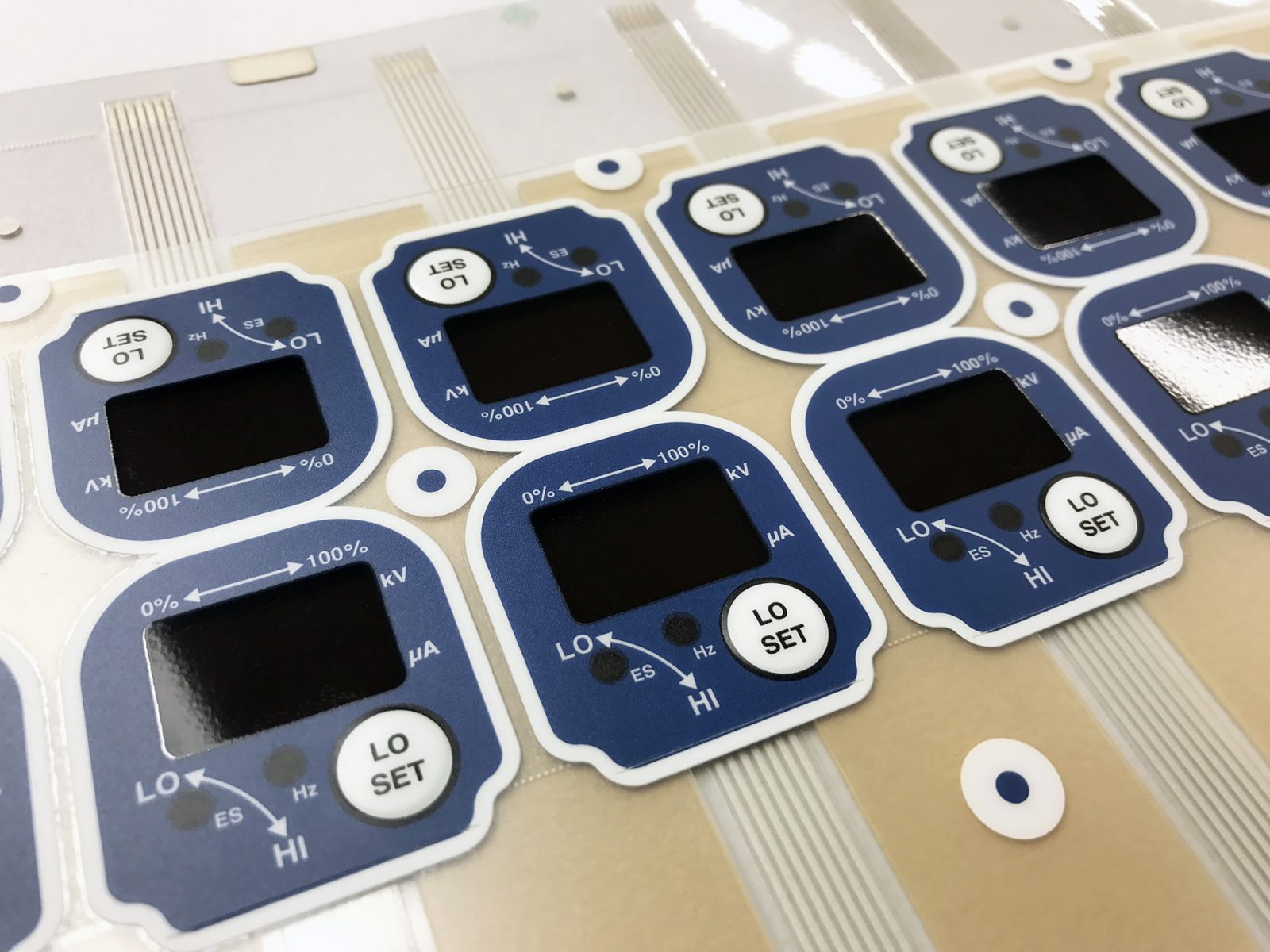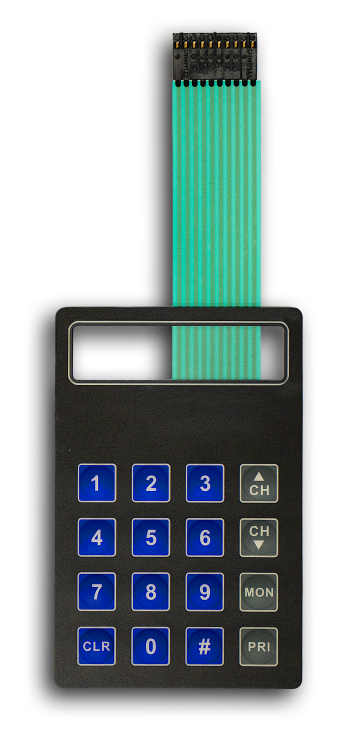How Membrane Switches Are Designed for Easy Maintenance and Repair
How Membrane Switches Are Designed for Easy Maintenance and Repair
Blog Article
Recognizing the Relevance of Membrane Switches in Interface
Membrane buttons are essential parts in the layout of efficient user interfaces, facilitating not only performance yet likewise boosting aesthetic charm and user interaction. Their unique features, such as resistance to ecological aspects and customizable designs, make them ideal for a diverse variety of applications throughout multiple sectors. As we check out the numerous advantages and future fads connected with Membrane innovation, it comes to be clear that these switches are extra than simply elements; they stand for a merging of development and usefulness. The effects of this innovation on individual experience deserve analyzing even more.
What Are Membrane Switches?

The spacer layer, which has glue properties, allows for the splitting up of the circuit layer from the overlay, making sure that the switch remains in a non-activated state till pressed. When pressure is related to the overlay, it compresses the spacer layer, bridging the void and completing the circuit in the underlying layer. This design not just decreases the physical space needed for standard mechanical switches yet likewise enhances the resilience of the tool, as Membrane buttons are generally resistant to dirt, wetness, and other environmental factors.
Commonly discovered in applications ranging from consumer electronics to medical gadgets, Membrane buttons are essential to modern technology, offering a easy to use and effective interface that lines up with modern design demands.
Advantages of Membrane Switches
While countless switch innovations exist, Membrane Switches offer unique advantages that make them particularly preferable in numerous applications. One of the primary advantages of Membrane buttons is their small layout, which enables space-saving applications in gadgets where actual estate is limited. Their thin account not just enhances visual allure but likewise promotes lightweight building.
An additional significant advantage is their resistance to ecological variables. Membrane switches are normally secured against moisture, dust, and pollutants, making them excellent for use in demanding atmospheres, such as clinical tools and commercial tools. This resilience prolongs the life expectancy of the button, lowering upkeep prices and enhancing reliability.
Furthermore, Membrane switches can be customized to meet particular style demands, integrating special graphics and shades that improve individual interaction. Their tactile feedback options can also be tailored to provide a satisfying user experience. Additionally, Membrane buttons are cost-efficient, specifically in high-volume applications, as they can be generated successfully.
Applications in Various Industries

In the customer electronics field, Membrane buttons prevail in devices such as microwaves, cleaning machines, and remotes. Their tactile responses and aesthetic alternatives improve customer experience while offering a streamlined, contemporary appearance. Furthermore, auto producers make use of Membrane buttons in dashboard controls and infotainment systems, where space is limited, and customer engagement is essential.
Furthermore, the commercial industry leverages Membrane buttons in control panels for machinery and equipment, enabling intuitive operation in usually severe settings. Their resistance to chemicals and moisture makes sure long life and reliability in these applications. Generally, the flexibility of Membrane Switches contributes dramatically to their widespread usage, making them indispensable in different technical domain names.
Design Considerations for Membrane Buttons

When making Membrane buttons, several essential considerations should be considered to make certain optimum capability and customer experience. The selection of products is critical; selecting long lasting, high-grade substratums can improve the button's durability and resistance to environmental factors such as dampness and temperature level changes.
Secondly, the design of the visuals overlay need to focus Check Out Your URL on quality and simplicity of use. Icons and message need to be readable, and the layout should promote instinctive interaction (membrane switches). Additionally, responsive comments is crucial; including a tactile dome or various other systems can improve the individual experience by supplying physical confirmation of activation
Another vital variable is the switch's electric efficiency. Designers have to make sure that the conductive traces are correctly designed to decrease resistance and prevent signal disturbance. This includes assessing the needed actuation force and making certain compatibility with the electronic parts they will interface with.

Future Trends in Membrane Modern Technology
As innovation continues to development, Membrane switches are positioned to evolve substantially, driven by developments in products and manufacturing methods. One arising trend is the consolidation of innovative products, such as adaptable substrates and conductive inks, which improve longevity and decrease the general weight of Membrane buttons. These products not only improve the tactile feedback yet also permit the style of buttons that can hold up against harsher environmental conditions.
Additionally, the assimilation of touch-sensitive modern technologies is changing conventional Membrane Switches into more interactive individual interfaces. Capacitive touch sensing units installed within Membrane button panels can give an extra receptive and intuitive user experience, aligning with the growing demand for sleek, modern designs in consumer electronics.
Additionally, advancements in check over here printing techniques, such as digital and 3D printing, enable quick prototyping and customization of Membrane buttons. This adaptability enables producers to respond quicker to market demands and consumer choices.
Last but not least, sustainability is coming to be a substantial emphasis, with manufacturers discovering environmentally friendly materials and procedures. As these fads unravel, the future of Membrane modern technology assures boosted performance, aesthetic appeal, and environmental responsibility, strengthening their duty in innovative interface across different sectors.
Conclusion
In conclusion, Membrane Switches stand for a vital element in the design of customer interfaces, combining functionality with aesthetic adaptability. Their advantages, including longevity and resistance to environmental elements, make them ideal for varied applications across different sectors. Thoughtful design factors to consider enhance user communication and experience. As improvements in technology proceed, the evolution of Membrane buttons is expected to further refine interface, driving development and enhancing functionality in an increasingly intricate technical landscape.
Membrane switches are essential parts in the design of efficient individual interfaces, facilitating not just capability but also improving visual allure and customer interaction.Membrane Switches offer as an essential component in different individual interfaces, helping with a smooth communication in between customers and electronic tools.While numerous switch technologies exist, Membrane Switches offer distinct advantages that make them especially desirable in different applications.Additionally, Membrane buttons can be personalized to satisfy certain style needs, including one-of-a-kind graphics and shades that improve individual communication.In final thought, Membrane Switches stand for an essential part in the layout of customer interfaces, integrating performance with aesthetic flexibility.
Report this page